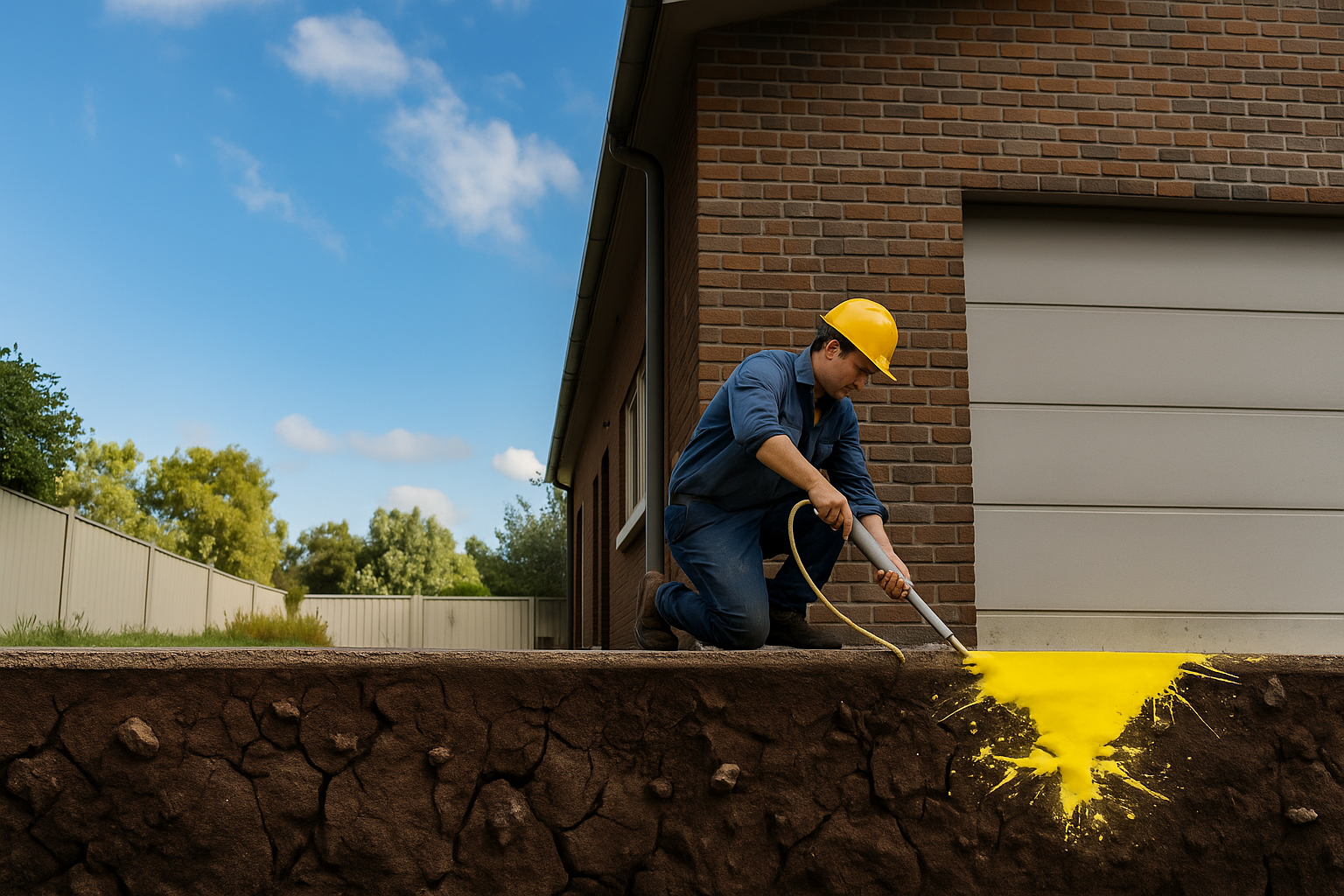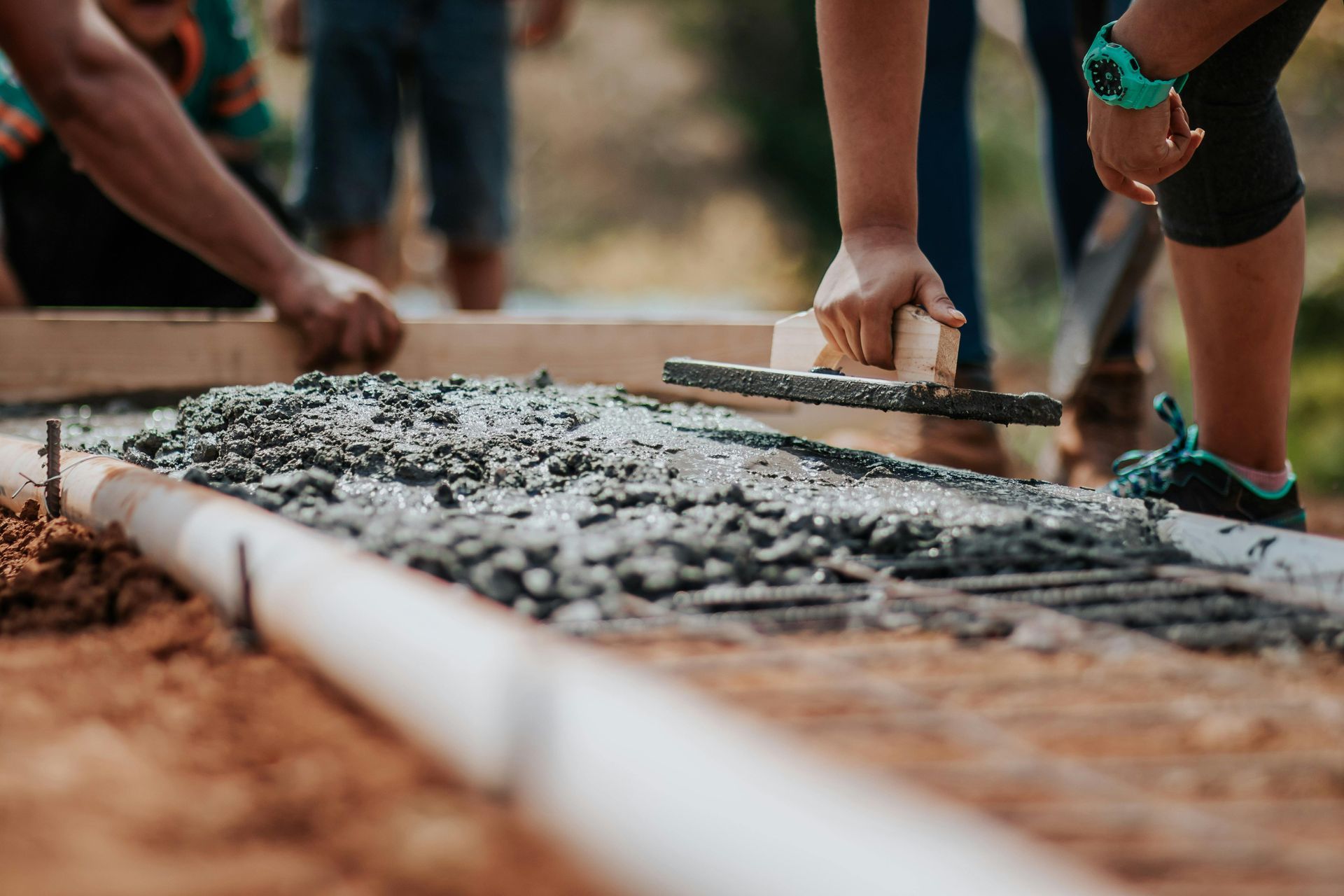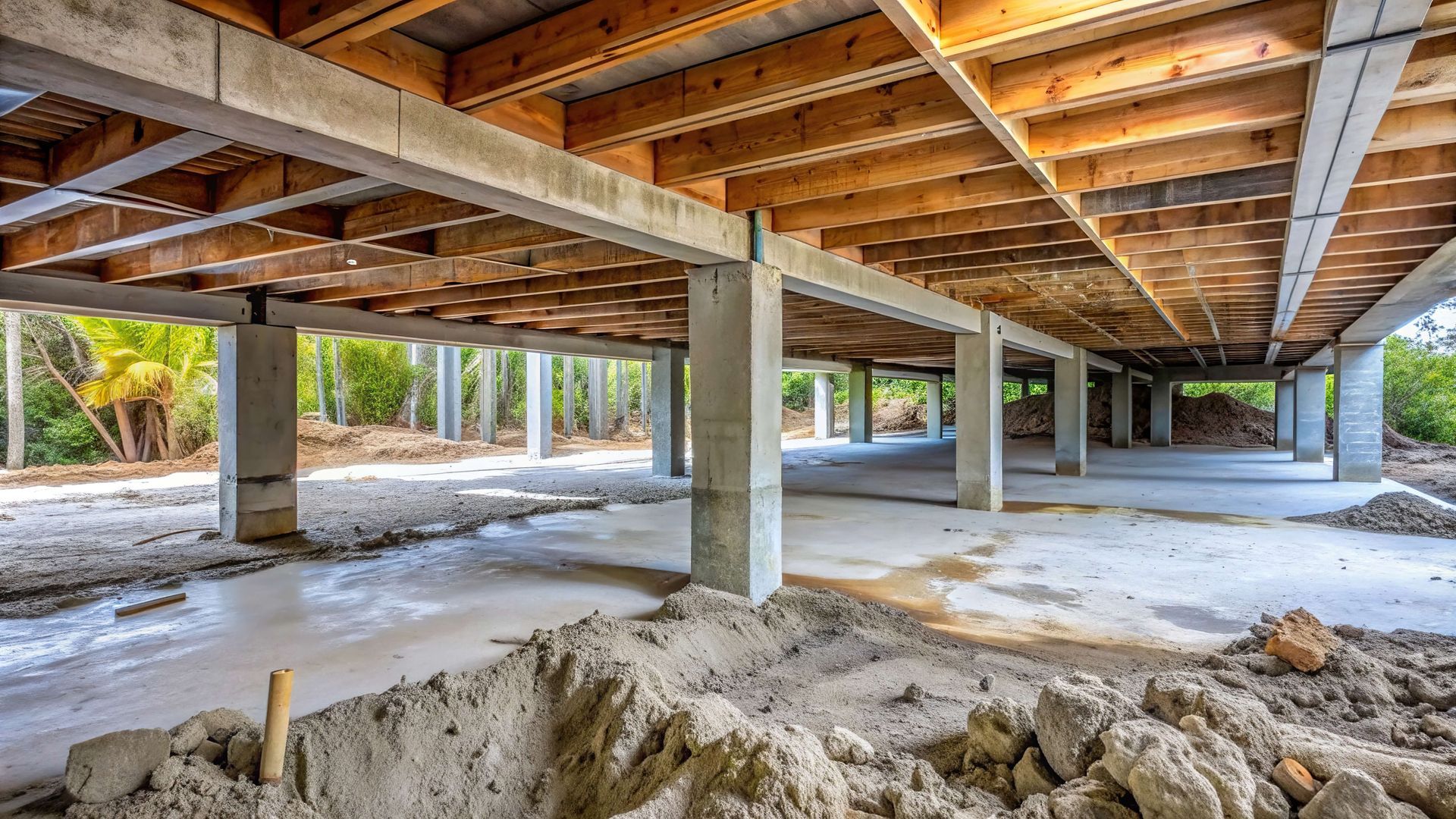wollongongrestumping@gmail.com
Why Resin Was Rejected for Foundations on Reactive Clay

People often ask if we use Epoxy Resin (aka Polyurethane injection or Resin Injection) for Structural Foundation issues such as subsidence or soil movement under the house base, and in our opinion, it is a hard ‘no’ from us.
We want to offer our findings from the vast experience of different soil conditions across Australia including coastal suburbs like Dapto and Wollongong, to explain why we came to that conclusion of not using epoxy resin, so consumers can make an informed decision for themselves when dealing with the visual signs such as cracks in exterior walls, cracks in gyprock in walls, slope failure in floors, and other areas that may require foundation investigation with a residential underpinning.
The Major Concerns We Have with Resin Injection
Our experience in the field has allowed us to observe and identify several significant problems that arise from using resin injection to address foundation issues. These are not just theoretical concerns; they are real issues that have impacted homeowners.
1. The Disappointment of Failed Lifts
One of the most common and heartbreaking issues we encounter is homeowners coming to us after a resin injection has failed to achieve its primary goal: lifting their home. Many clients invest in this method with the clear expectation of seeing their property lifted back to its original level, only to find little to no change. Leaves them with a significant financial outlay and a problem that remains unsolved, forcing them to seek alternative, more effective solutions.
2. Lack of Proper Engineering Assessment
For any structural foundation repair, a thorough and professional inspection by a qualified engineer is necessary. We frequently find that resin injection projects are undertaken without an RPEQ (Registered Professional Engineer of Queensland) registered engineer conducting a detailed site review and providing a solution report. This report should assess the foundation issues and clearly justify why resin injection is the appropriate approach and whether proper hydraulic jacks are used or not. Without this step, there's a risk that the underlying problems are not fully understood or that the chosen solution is inadequate.
3. Vague Problem Identification What's Really Going On?
A successful foundation repair hinges on accurately identifying the root cause or causes of the problem and understanding its full extent. Unfortunately, we have observed a consistent lack of detail in how resin injection providers identify these elements. If you don't truly understand
why your foundation is failing or sinking and
how extensive the damage is, it's impossible to implement an effective and lasting repair.
4. Failing to Secure Below the Zone of Influence (ZOI)
Reactive clay soils are a real headache for homeowners. They swell up when they get wet and shrink back down when they dry out. This movement happens in a specific layer of soil called the 'zone of influence'. It's this zone that constantly shifts with the seasons.
A big problem we see with resin injection or pressure grouting is that it doesn't reach below this moving soil layer. So, while it might look like it's fixing the surface cracks, it is not solving the root cause. The foundation is still sitting on unstable ground, which can lead to more problems down the track.
5. Building Code Compliance and Regulation
Foundation work is a serious undertaking that directly impacts the safety and strength of your home. As such, it is subject to strict building codes and regulations. We have frequently seen instances where resin injection works are carried out without proper registration with the
Building and Construction Commission (BCC). This lack of oversight means there’s no official body to ensure licensing and regulation, proper dispute resolution mechanisms, adherence to building codes and standards, home warranty insurance, compliance, enforcement, and ultimately, consumer protection. This puts homeowners at risk, as the safety, quality, and reliability of the work cannot be guaranteed.
6. The Unpredictable Cost of Resin Process
One of the most frustrating aspects for homeowners considering resin injection is the lack of transparency and predictability in its cost. We have observed numerous cases where the final cost to the consumer has significantly blown out beyond initial estimates. This is because resin can behave unpredictably in underground porous soil, may continuously absorb it, hidden gaps beneath the house can start filling up, or additional injections may be required if the resin does not provide sufficient strength or stability. Since the spread of resin is difficult to control, the total volume needed often exceeds expectations, making resin injection one of the least quantifiable and most expensive methods to estimate upfront.
7. Lack of Control Over Resin Placement
During the injection process, controlling precisely where the resin goes can be a major challenge. We have witnessed many sites where resin has found its way into service pipes, causing severe interference with the functionality of the property. Furthermore, in homes with waffle pods, the material can fill up voids within the pod arrangement, which not only wastes valuable polyurethane resin material but also your repair cost, as it doesn’t contribute to the structural integrity in the intended way.
8. Alarming Lack of Accountability for Works Performed
When a resin injection fails, homeowners discover a shocking truth: there is frequently no guarantee of the
work performed. Instead, the warranty is often
only on the product itself (e.g., that the resin won’t shrink). This means that if the repair doesn’t hold, the additional cost to continue repair works falls squarely on the consumer. In last, they end up paying twice to solve the same problem, which is a cruel outcome for anyone facing foundation issues.
9. Hidden Costs for Essential Reporting
Another area where transparency is often lacking is in the reporting provided to the client. We have observed situations where homeowners are required to pay additional costs if they want the full report of the work done, or if engineers are required to be involved. We believe that comprehensive reporting and necessary engineering assessments should be an integral part of the service, not an extra charge that adds to the client’s financial burden.
10. The Controversy Among Structural Engineers
Homeowners need to know that the efficacy and long-term reliability of resin injection for structural foundation repairs remain a subject of considerable debate and controversy among professional Structural Engineers. This ongoing discussion within the expert community itself raises significant red flags and underscores the concerns about relying on this method for critical structural issues or You can book a free inspection of your home, and our professional team will come by your door to inspect.
Smarter Alternatives to Resin Injection
When it comes to fixing foundation issues, resin injection or resin grout injection is sold as a quick, non-invasive solution. But in reality, it rarely provides the strength or longevity that a home needs. That’s why we turn to proven alternatives that directly address unstable soil and foundation movement.
One of the most reliable methods is screw pile underpinning, also known as helical piles. These steel shafts are screwed deep into stable soil layers, well below the reactive clay zone. By anchoring your home into firm ground, screw piles provide permanent support that won’t shift with seasonal changes. For some homes, mass concrete underpinning or bored-pier underpinning may be the better choice according to their soil conditions, where reinforced concrete blocks are installed beneath the footing to stabilize the structure.
If your home is built on stumps, the solution may be restumping. This involves replacing old or rotting stumps with durable concrete or steel supports, restoring strength to the foundation, and re-leveling the house in the process, according to the National Construction Code of Australia. For smaller adjustments, jack-and-pack releveling can be used, where jacks lift the floor and permanent packers hold it steady. In cases where voids remain under the slab after proper stabilization. We may also use cementitious grout filling, which is far stronger and more predictable than resin, and also use biochemical stabilisers like calcium carbonate / calcium silicate / sodium silicate / sulfate solution as a soil stabilizer to react with the clay minerals and make a strong bond as soil cement.
Why Soil Testing Comes First
A repair is only as good as the diagnosis. That’s why we always begin with thorough soil and foundation testing before recommending any treatment. A site and level survey shows us how the home has moved and which areas are most affected. CCTV and leak detection uncover hidden plumbing problems that may be contributing to soil instability.
For deeper insights, we carry out geotechnical investigations, Nano silica clay reaction, swell shrinkage test, thermogravimetric analysis and calculate the soil water retention. This involves drilling test holes, sampling the soil, and sending it to a lab for analysis. Tests such as moisture content, Atterberg limits, and swelling shrinkage potential tell us how reactive the soil particles are and how deep the water absorption problem extends. By mapping the “zone of influence” and locating stable strata beneath it, engineers can design a solution that directly addresses the root cause instead of relying on guesswork.
When Resin Injection Has Already Been Tried
Many homeowners come to us after a failed resin injection, frustrated that the cracks have returned or the floors are still uneven. In these cases, the first step is building inspection what really happened during the previous repair. We measure floor levels, check for resin that may have flowed into service pipes, and look for untreated voids beneath the slab.
Once the true cause is identified whether it’s soil shrinkage, water leaks, or drainage issues we create an inspection report with proper foundation solutions to stabilize your base under Australian standards AS 2870/2011. This may involve
underpinning with screw piles,
restumping, or
cementitious void filling if spaces remain beneath the slab. Unlike resin, these methods provide long-term structural support that restores stability instead of masking the symptoms.
Treatments After Structural Repairs
After the foundation is stabilized, attention can turn to making the home comfortable and safe again. Includes soil stabilization to releveling floors, so doors and windows close properly and the house feels balanced. Damaged plaster, brickwork and cracks in walls can be repaired by cementitious gel once we know the structure is no longer moving. Structural cracks are stitched and reinforced, while cosmetic cracks are patched and painted to restore the home’s appearance.
Addressing drainage is also a part of aftercare. We may recommend upgrading stormwater systems, repairing leaking pipes, or ground improvement so water flows away from the house. By controlling the soil’s moisture levels, we help ensure that the repaired foundation remains stable for decades to come
Conclusion
Resin injection might seem like a quick fix, but it rarely delivers lasting results. We have seen failed lifts, rising costs, and problems like resin seeping into pipes or filling waffle pod voids.
We start with proper soil testing in our free inspection. We use borehole sampling, penetrometer testing, or geotechnical analysis to understand what's happening beneath your home. Once we know the real cause, we recommend proven solutions. These include underpinning, restumping, or re-levelling. All solutions are designed by qualified engineers to address the problem at its source.
For homes already treated with resin, we can still help. We provide corrective treatments that stabilise the ground, lift where possible, and repair cracks. Choosing the right approach isn't just about fixing cracks today. It's about making sure your foundation stays solid for decades. When you invest in careful investigation and long-term solutions, you get structural stability. You also get peace of mind knowing your biggest asset is truly protected.
Ready to work with Wollongong Restumping?
Let's connect! We’re here to help.
Send us a message and we’ll be in touch.
Or give us a call today at 0242026325






